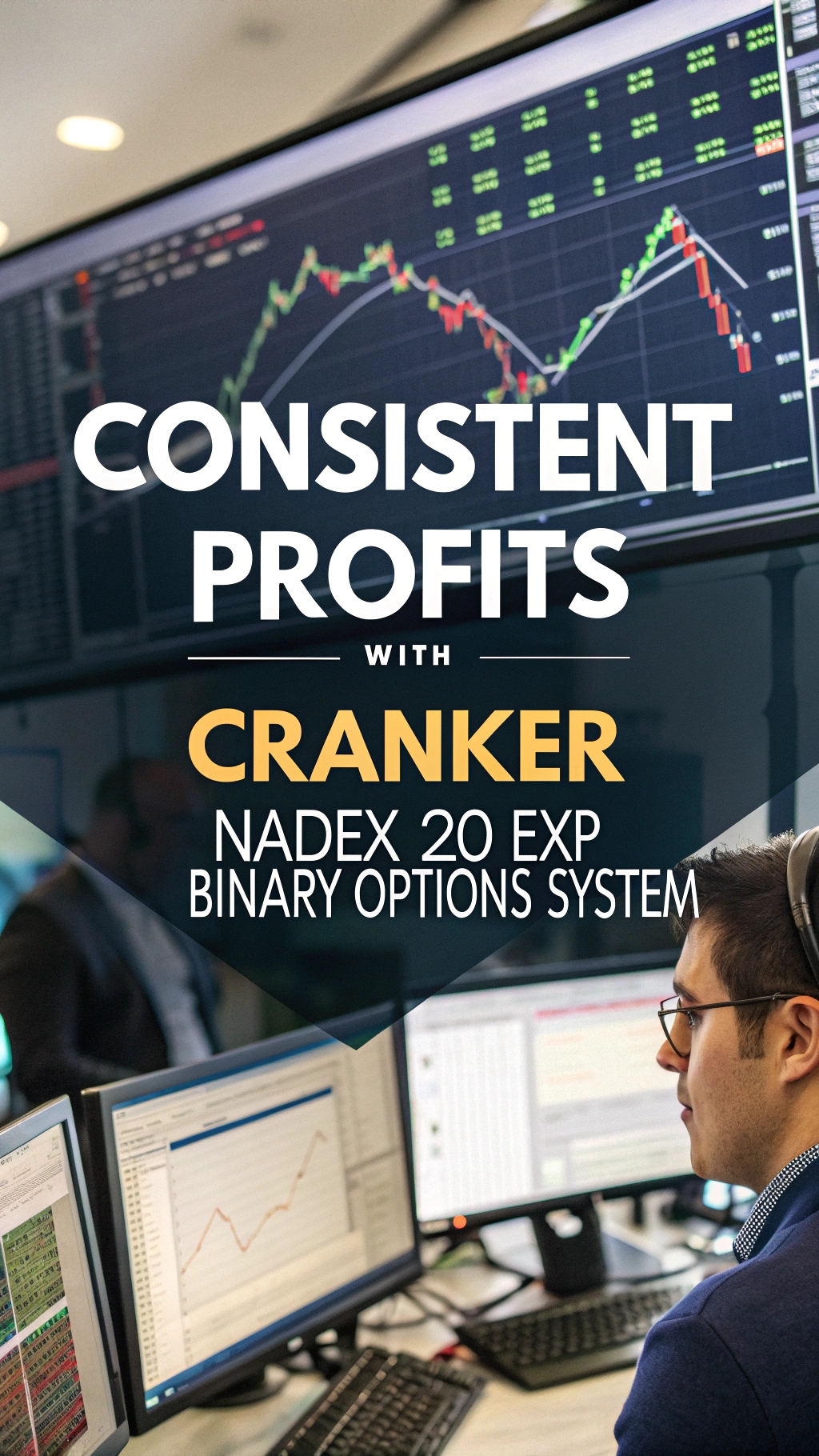Consistent Profits with CRANKER – NADEX 20 Exp Binary Options System
Unlock This! CRANKER – a Solid Approach to Trading Binary Options that Has Caused a CRANK Student to Say This Approach Allowed Him and His Family to Live a Lifestyle They Never Could Have Before…
In trading, achieving reliable results often comes from mastering straightforward, repeatable methods that focus on core price action without unnecessary complexity. The CRANKER – NADEX 20 Exp Binary Options System provides such a method, emphasizing a “bread and butter” style designed to generate steady outcomes through consistent application . This post breaks down the system’s key elements into clear steps, using real performance examples to illustrate how you can apply it for potential daily profits. By following this structured approach, you’ll gain practical skills for executing trades mechanically, much like identifying reliable patterns in market charts.
Step 1: Understanding the Core Concept and Entry Rules
Begin by grasping the system’s foundation: it’s built on a simple price action discovery that allows for mechanical entries without indicators or guesswork . The rules center on spotting specific movements in 1-minute bars for NADEX 20-minute expirations, targeting at-the-money (ATM) strikes or slightly in-the-money ones when in doubt.
To apply this:
- Set up your chart on a platform like NADEX, focusing on instruments such as US Small Cap 2000 (RTY) or YM futures.
- Watch for the system’s entry trigger, which signals a trade based on predefined price behavior – no need for overanalysis, as the method is designed to “smash through” various market conditions without daily adjustments .
- Enter the trade promptly, aiming for the closest ATM binary option. If the price moves too quickly or no suitable strike is available, skip it – plenty more opportunities follow.
This step ensures you trade objectively, reducing emotional decisions and building a routine that’s easy to repeat.
Step 2: Selecting Strikes and Managing a Series of Trades
Once an entry trigger occurs, select your strike carefully to align with the system’s high-probability setup. Favor ATM options for a balanced 50/50 risk-reward, which are more readily available in 20-minute expirations compared to shorter ones like 5-minute binaries . Avoid early exits; let trades go to expiration to simplify the process.
Manage trades in sequence:
- Treat each session as a series – for example, commit to trading all signals in a 1-hour or full-day block without picking and choosing, as the system nets profits over multiple trades .
- Track wins (W) and losses (L) to calculate nets. A practical example from December 11, 2020, on US Small Cap 2000 shows a sequence like WWLWWLWWWWWWLLWWWLWWWLWWWWWWLWWWWWLWWW LWLWWLWLWLWWLWWLLLWLWWLWW, resulting in 47 wins and 19 losses for a net of 28 .
- Per contract, this nets $1,400 (assuming $50 per win after risk). Scaling positions is key here – start with 1 contract and increase as your account grows, following basic business math to compound gains .
By managing trades this way, you create a mechanical process that emphasizes volume over perfection, similar to how trend-following strategies accumulate edges over time.
Step 3: Scaling Positions and Calculating Potential Profits
To turn consistent nets into substantial returns, scale your contract size based on account growth. The system supports this by providing repeatable results across sessions.
Consider the math:
- On a net of 28, as in the December 11 example, 1 contract yields $1,400 .
- Increase to 10 contracts, and the same net produces $14,000 for the day .
- Adapt to your session length: trade 1-2 hours for shorter commitments, or extend to 6 hours for higher volume, always taking trades in a row to maintain the system’s edge .
Review historical data to verify patterns – for instance, November 5, 2020, yielded 28 wins and 13 losses for a net 15 in a partial session, equating to $750 per contract or $7,500 on 10 contracts . This step teaches you to view trading as a scalable business, focusing on net positives rather than individual trade outcomes.
Step 4: Practicing for Confidence and Real-World Application
No system works without hands-on practice. Use a demo account to simulate live conditions, focusing on timely entries and strike selection . Study historical charts to recognize the price action triggers, building familiarity so you can execute without hesitation.
Tips for effective practice:
- Start with short sessions to match your attention span, gradually extending as comfort grows – everyone has different limits, so experiment to find your optimal duration.
- Analyze past results like the July 23, 2020, session (29 wins, 13 losses, net 16) to see how the system performs in real markets, netting $800 per contract or $8,000 on 10 .
- Extend the concepts beyond binaries: apply the core price action to Forex, stocks, or futures for diversified trading .
By practicing this way, you’ll develop the discipline needed for long-term consistency, turning the system into a reliable tool for daily trading.
In summary, the CRANKER – NADEX 20 Exp Binary Options System offers a direct path to consistent profits through its mechanical, no-fuss design. By following these steps – from entry rules to scaling and practice – you can build actionable skills that stand up to market variability. Start small, master the basics, and let the nets compound over time for meaningful results.





